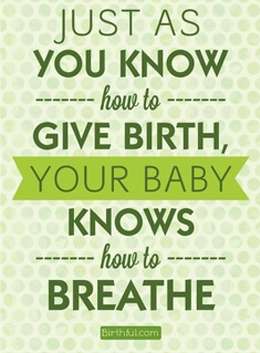No crazy positions. No regrets. No extreme lingerie. Just these facts that will help pump up your pleasure. Tonight’s going to be a good night.
By: Camille Noe Pagan
When you’re deep in the throws of “Yes… YESSS!” passion, you’re probably not giving all that much thought to watch mysterious and wonderful things orgasms are. But when you’re less, well, preoccupied, you might be interested to know that there’s some pretty amazing stuff going on while you’re getting busy. For example, were you aware that your breasts can get off from a great roll in the hay? Or that having a good-looking partner may lead to a grander finale? (True and true.) We uncovered scientific findings that might just make your next bedroom session even better.
Steady partners beat one-night stands
You’re more likely to hit the mark if you’re having sex with someone special rather than a casual fling, suggests a study in the American Sociological Review. “New relationships can be intoxicating, but that doesn’t always translate into arousal,” says sex therapist Madeleine Castellanos, MD, author of Wanting to Want. You’re more apt to be anxious with someone you don’t know well, Dr. Castellanos explains: “With a long-term partner, it’s easier to relax and be honest about your needs.” Have a hard time doing that? “Ask for one small change at a time.”
Chanting “om” can help you say “ohhh”
Women who did 22 yoga poses several times a week for 12 weeks reported more desire, increased arousal and better orgasms, according to a study in The Journal of Sexual Medicine. Getting bendy strengthens your pelvic and abdominal muscles, which may improve your ability to climax. Yoga can also help reduce depression and anxiety, which ups the odds you’ll get in the mood.
There is no G-spot
A 2014 study in Clinical Anatomy supported what sex experts have said for years: For most women, the epicenter oforgasms is the clitoris, not the vagina or the much-hyped “G-spot.” If you can’t tell the difference, there’s a reason, says Nicole Prause, PhD, a sex researcher at UCLA: “Orgasm causes rhythmic contractions in your vaginal and anal sphincters, so it can feel like it’s happening everywhere.” To enhance enjoyment, don’t start with heavy pressure on the clitoris, Dr. Castellanos advises. With a silicone lube, use a light touch to find which part of the clitoris is most responsive, then slowly increase the pressure as your pleasure builds.
It helps to make a little noise
Most women don’t spontaneously scream or call out during orgasm, per a study in the Archives of Sexual Behavior. Instead, we’re more likely to make noise while a male partner is climaxing, possibly to enhance his experience. If you’re the quiet type, you may want to rethink that: “Bedroom noises can help men and women become aroused,” explains clinical sex therapist Kat Van Kirk, PhD. That doesn’t mean you have to mimic a porn star: Simply get vocal in a way that feels natural to you.
Can’t come? Blame your brain
“For women, sex begins in the head,” says Kecia Gaither, MD, an ob-gyn at Montefiore Medical Center in New York City. That may be why negative thoughts during sex are linked with trouble achieving orgasm, according to a report in the journal Sexologies. “Many people find they can get aroused more easily in a car than in their bedroom,” Dr. Castellanos says. “That’s because a car doesn’t have the same stress triggers associated with it as the bedroom— plus it has an erotic charge of taboo.” Dr. Castellanos suggests making your boudoir a place strictly for sleep and sex (not for catching up on email).
His looks can affect your outcome
A Penn State study found that women were more likely to orgasm around the same time as a male partner—and experience more frequent orgasms to boot—if they deemed him attractive or masculine. The connection isn’t clear, but there could be evolutionary factors at play, Van Kirk says: Heterosexual women may inherently desire masculine partners to have children with, and some research suggests that a vagina is more receptive to semen after orgasm—which boosts fertility. But don’t go trading partners just so you can hit your high notes together: “It’s a cultural idea that a simultaneous orgasm is superior to an independent orgasm,” Van Kirk says. “It’s simply not true.”
Foreplay is more than just fun
Most women with a familiar partner reach the big O more than half the time they engage in sexual activity, per recent Kinsey Institute science. If your success rate isn’t quite that high, hear this: “Our research suggests that you get the same good stuff during arousal,” Prause says. “Orgasm isn’t particularly special; it’s just a concentrated version of what you experience in an aroused state.” So there.
Faking it (to a point) can help you make it
If you’ve ever imitated the deli scene fromWhen Harry Met Sally…there may have been a good reason: Research has shown that heterosexual women who pretend to climax with a partner often do so to make sex more enjoyable. “Faking is dishonest, but exaggerating during sex can help you get into a mind- set where you’re enjoying yourself more,” says clinical sexologist Eric Marlowe Garrison, an instructor of masculinity studies at the College of William and Mary. “Use your body to prime yourself for orgasm. I encourage clients who have trouble climaxing during masturbation to arch their backs, breathe deep and make noise.”
Your body on orgasm
You know what’s going on down there, but did you ever wonder how the rest of your body responds to a good romp? Check out these pleasure zones.
Brain
As many as 30 areas of the brain play a role in orgasm, per Rutgers University research. Among them: the orbitofrontal cortex (involved in behavioral control, it temporarily shuts down—buh-bye, inhibitions!), the amygdala (involved in processing emotions) and the hypothalamus (it becomes flooded with feel-good chemicals like oxytocin, which can trigger uterine contractions and increase a sense of intimacy).
Eyes
As you become aroused, your pupils dilate, and they stay that way until after you’ve climaxed. This may subtly tell your partner you’re interested and make you more attractive, or, from an evolutionary perspective, it might up the odds you’ll be able to spot danger during a time when your brain is otherwise occupied.
Heart
Your heart rate and metabolism go up as you become aroused, which may be part of the reason you burn calories when you get frisky.
Breasts
When touched, your nipples—loaded with sensitive nerve endings—send messages to an area of your brain’s sensory cortex that is activated by genital stimulation (and vice versa). Experts think those messages may cause your nipples to become erect.
Muscles
From toe curling to back arching, muscles all over your body tighten just before orgasm and then release as climax hits. It works the other way, too: By tightening your muscles, you send messages to your brain that may help you achieve orgasm.
Skin
They call it the “afterglow” for a reason: As you climax, your circulation increases and your body releases endorphins into your bloodstream. That combination brings blood closer to the surface of the skin, making your cheeks and chest flush.






